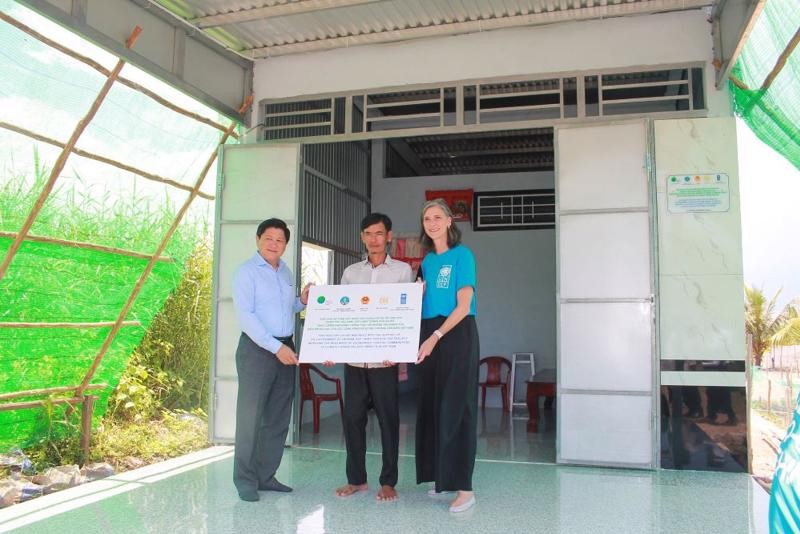Climate change and Artic heat: The reasons behind snowstorm in Texas
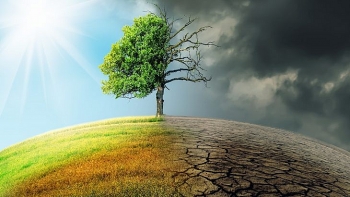 | McKinsey: 8-13% of Asia GDP faces climate change risks by 2025 |
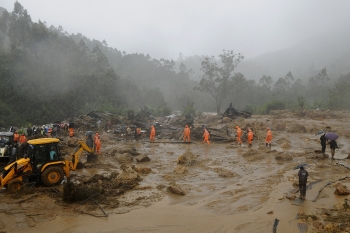 | Asia Most Affected By Climate Change |
 | Climate change set to cause more severe consequences unless more coordinated efforts |
For many, especially folks who live in the South, the arctic outbreak that has gripped the nation's heartland for the past week is the kind of cold that only happens once in a century. Countless record cold temperatures were set. Conditions overwhelmed the Texas power grid, cutting off electricity to millions and bursting water pipes, creating a humanitarian crisis.
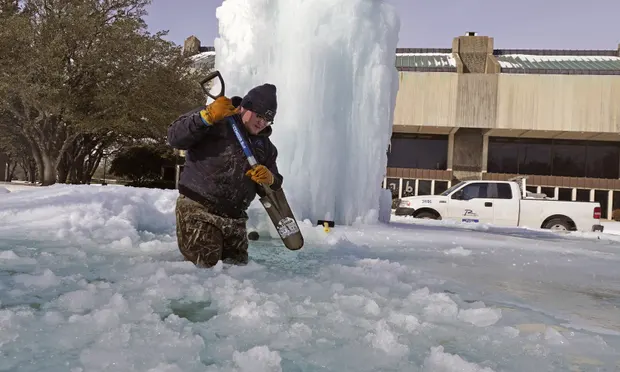 |
| Kaleb Love, a municipal worker, breaks ice on a frozen fountain in Richardson, Texas, on Tuesday, as freezing temperatures grip the state. Photograph: LM Otero/AP |
But with climate change making for generally warmer winters and causing heat records to outnumber cold records by 2 to 1 globally over the past decade, this historic cold snap may seem counterintuitive. It's not. In fact, paradoxically, a warmer climate may have actually contributed to the extreme cold, according to CBS News.
The science of meteorology has come a long way in the past few decades, so much so that meteorologists saw this extreme winter weather coming many weeks in advance. That's because this extreme pattern was initiated by a large and recognizable phenomenon which unfolded in the Arctic at the beginning of the year called Sudden Stratospheric Warming, or SSW.
CBS News previewed the wild winter weather in this January 7th article, explaining how over the course of just a few days in late December and early January, temperatures in the atmosphere high above the North Pole warmed by 100 degrees Fahrenheit — jumping from minus-110 degrees Fahrenheit to minus-10.
SSW's are a natural occurrence which happen every couple of winters and portend extreme weather in the weeks following them. That's because when the Arctic warms rapidly it disrupts a spinning mass of cold air — the polar vortex — a semi-permanent weather system which is present each winter.
According to The Guardian, associating climate change, normally connected with roasting heat, with an unusual winter storm that has crippled swaths of Texas and brought freezing temperatures across the southern US can seem counterintuitive. But scientists say there is evidence that the rapid heating of the Arctic can help push frigid air from the north pole much further south, possibly to the US-Mexico border.
This week, a blast of winter weather has reached deep into the heart of the US, causing several deaths and knocking out power for about 5 million people. Sleet and ice have battered Oklahoma and Arkansas, while many people in Texas have been left marooned, amid unsafe travel conditions, in homes with no electricity.
“The current conditions in Texas are historical, certainly generational,” said Judah Cohen, the director of seasonal forecasting at Atmospheric and Environmental Research. “But this can’t be hand-waved away as if it’s entirely natural. This is happening not in spite of climate change, it’s in part due to climate change.”
Last year, Cohen co-authored a paper that found a strong uptick in winter storms in the US north-east in the decade leading up to 2018. This, Cohen and some other scientists argue, is a symptom of heating in the Arctic, occurring at a rate more than twice the global average, that is disrupting long-established climatic systems.
Cold air is normally concentrated around the north pole in the polar vortex, an area of low pressure that circulates in a tight formation in the stratosphere during winter. This rotation is likened by scientists to a spinning top, one that can meander if it is interfered with.
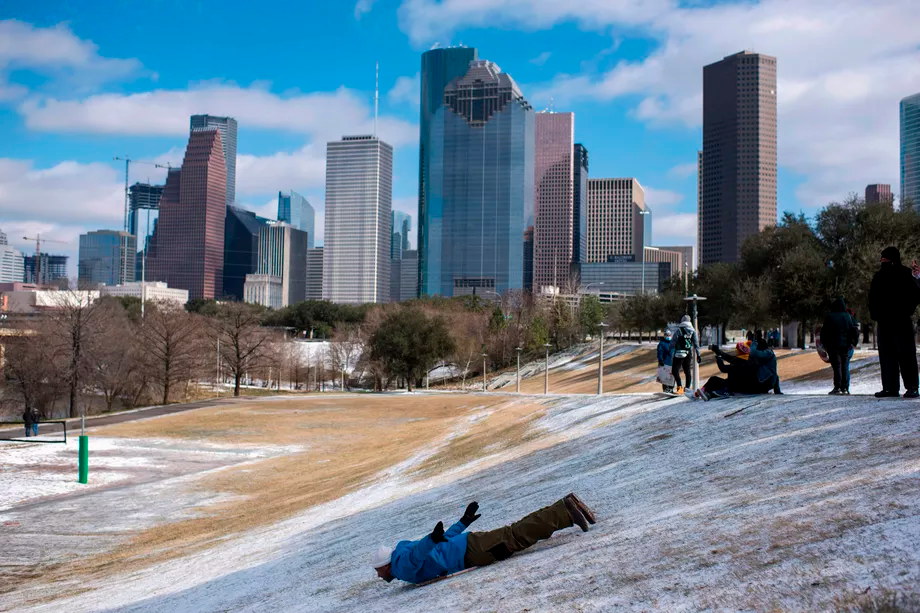 |
| The extreme cold weather that gripped cities like Houston, Texas, this week began as a perturbation in the Arctic. Scientists are trying to find out whether such events will become more frequent. Mark Felix /AFP via Getty Images |
This interference, researchers say, is occurring through changes to the jet stream, a band of strong winds that wraps around the globe at lower elevations than the polar vortex. The warming of the Arctic, it is thought, is causing the jet stream to shift. “The energy escaping from the jet stream bangs into the polar vortex so it starts to wobble and move all over the place,” said Cohen. “Where the polar vortex goes, so goes the cold air.”
This phenomenon has shown itself to a dramatic degree over the past month, with a splitting of the polar vortex helping cause huge flurries of snow in Europe as well as record cold temperatures in parts of the US more accustomed to milder winters.
“I’d say the situation this winter is consistent with research that has connected what’s happening in the Arctic with extreme weather patterns in the mid latitudes,” said Jennifer Francis, a senior scientist at Woodwell Climate Research Center who has studied the issue. “The polar vortex can elongate, stretch into different shapes and even split. We have seen a very big disruption this year.”
There is no consensus among scientists over the interaction between Arctic heat and cold weather further south – Francis calls the topic an “active area of research”. Global heating is causing warmer winters, and record cold temperatures are now being clearly outpaced by record hot temperatures, but the complex interplay of climatic conditions still requires further scrutiny, to the consternation of some and even mockery among others, including former US presidents.
“We still have a lot to learn on this,” said Francis. “I think this year will be studied for a long time.”
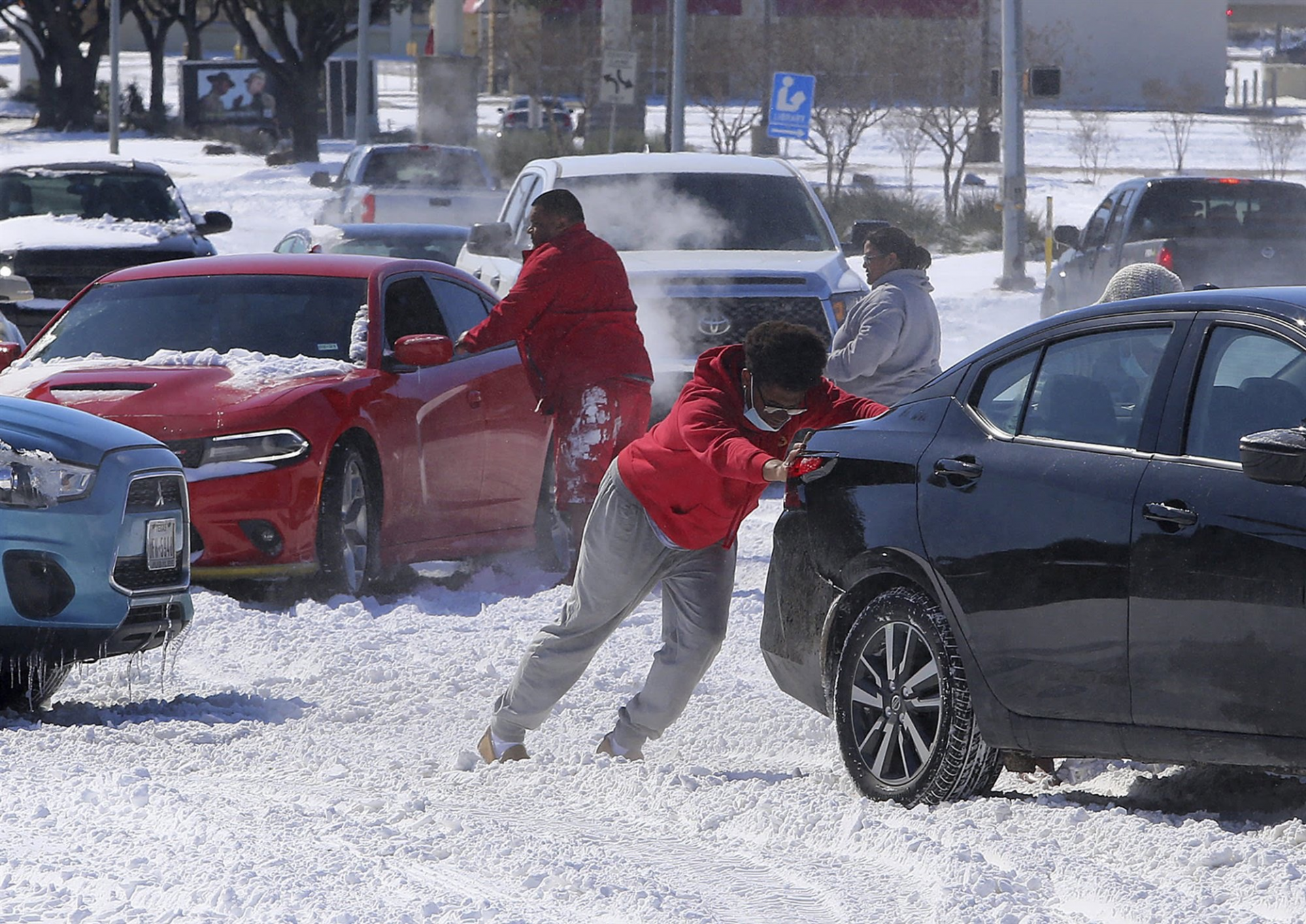 |
| People push a car free after spinning out in the snow Monday, Feb. 15, 2021 in Waco, Texas. A winter storm that brought snow, ice and plunging temperatures across the southern Plains and caused a power emergency in Texas stretched its frigid fingers down to the Gulf Coast.Jerry Larson / AP |
How extreme cold and extreme heat are connected
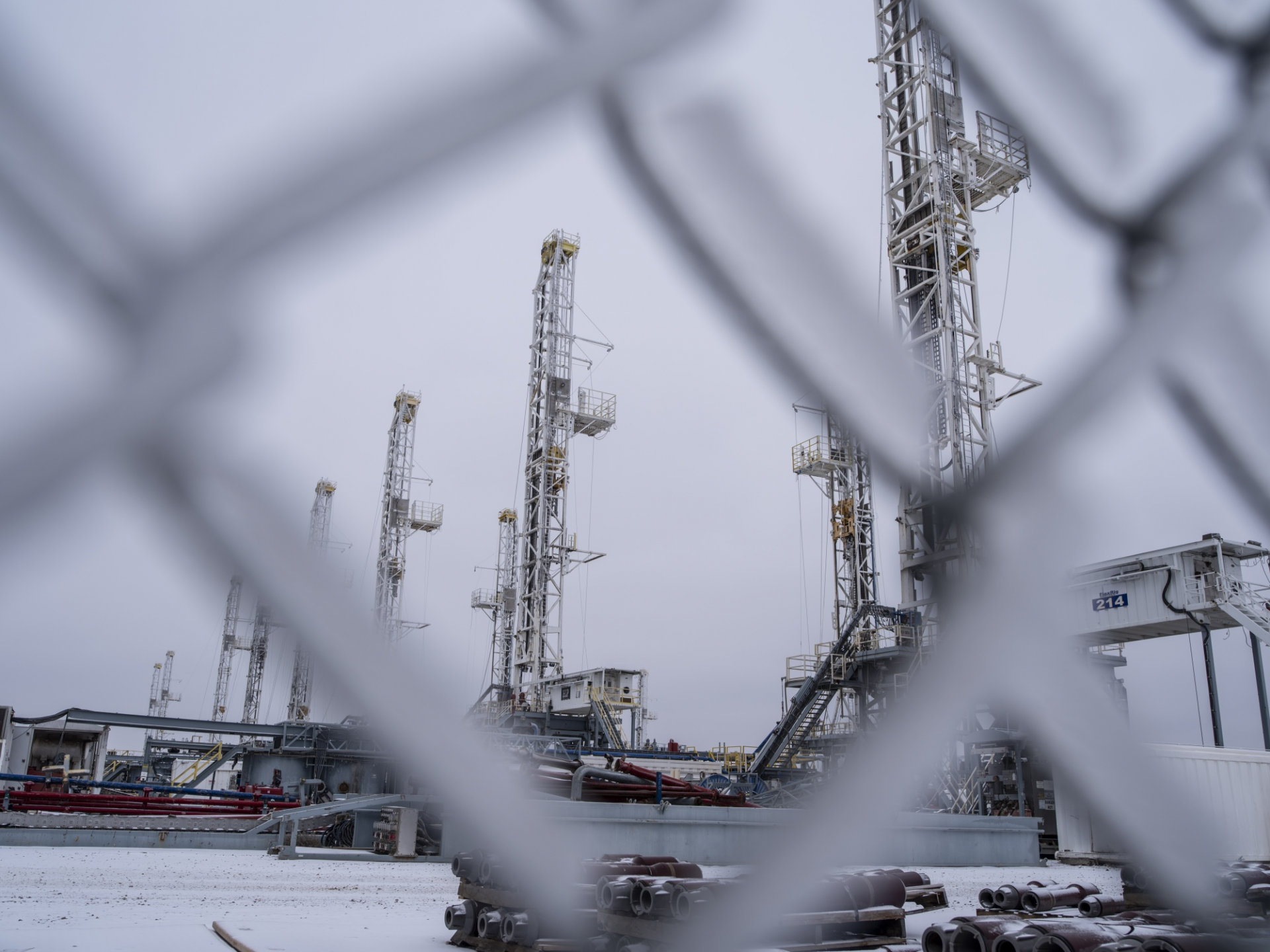 |
| Idle oil drilling rigs near Midland, Texas, on Feb. 13.Photographer: Matthew Busch/Bloomberg |
While this extreme cold paired with extreme heat may seem odd, it's actually what meteorologists would expect of a wavy jet stream. Think of it this way: what goes up must come down. When the atmosphere forces cold air south, there must be an equal and opposite reaction forcing warm air north. When air masses are displaced into places they don't typically visit, weather extremes and the impacts they bring to society follow, according to CBS News.
A number of climate scientists think that climate change may not only be making sudden stratospheric warming more likely, but that climate change itself may have a similar effect in the Arctic, because it is also causing significant warming. Due to human-caused climate change, the Arctic is warming at three times the pace of the global average.
The wavy jet stream theory, as it relates to climate change, was pioneered by Dr. Jennifer Francis at Woodwell Climate Research Center. The theory makes logical sense: Arctic warming reduces the gradient between warm and cold air, and thus weakens the temperature contrast mechanism which powers the strength of the jet stream. That results in a weaker, more wavy jet stream, which is more likely to spill its cold air southward.
The theory has since been adopted by many other climate scientists, who view the apparent increasing extremes, like this latest bitter blast, as sign the theory has merit. But a sizable group of other scientists have their doubts about the impact of climate change and Arctic amplification on the jet stream.
That's partly because the atmosphere is very noisy and climate models are not quite yet capable of reproducing the finer details of a complex system. Thus, finding evidence to definitively prove or disprove the theory has been a challenge. But many long-time meteorologists believe the logic, the research and the qualitative evidence they have observed is enough to make the case.
What all meteorologists and climate scientists can agree on is this extreme event was set in motion by a Sudden Stratospheric Warming. That was the driving force.
For those tired of cold and snow, good news: it seems the extreme pattern has about run its course. The globe is about to return to a more normal pattern. That does not preclude cold air outbreaks and snowstorms for the U.S. as we head into spring, but it should allow the weather to return to some degree of normalcy.
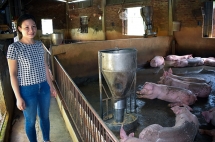 | Pig pens power a solution to climate change in Vietnam Trin Gim, Ung Hoa District, South of Hanoi. Photo: UN Environment/Annette Wallgren |
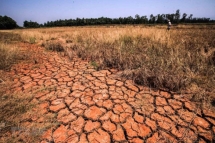 | European countries implement climate change projects in Mekong Delta The European Union (EU) and European countries have been carrying out a number of climate change adaptation and sustainable development projects in the Mekong Delta ... |
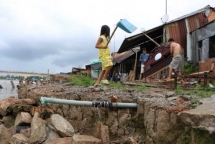 | ASEM takes action to respond to climate change The Asia-Europe Meeting (ASEM) Conference on Climate Action to Achieving the Sustainable Development Goals - Ways Forward took place in the Mekong Delta city of ... |
Recommended
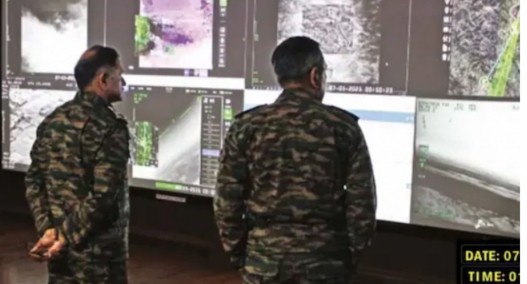 World
World
India reports 9 Pakistani Aircraft Destroyed In Operation Sindoor Strikes
 World
World
Thailand Positions Itself As a Global Wellness Destination
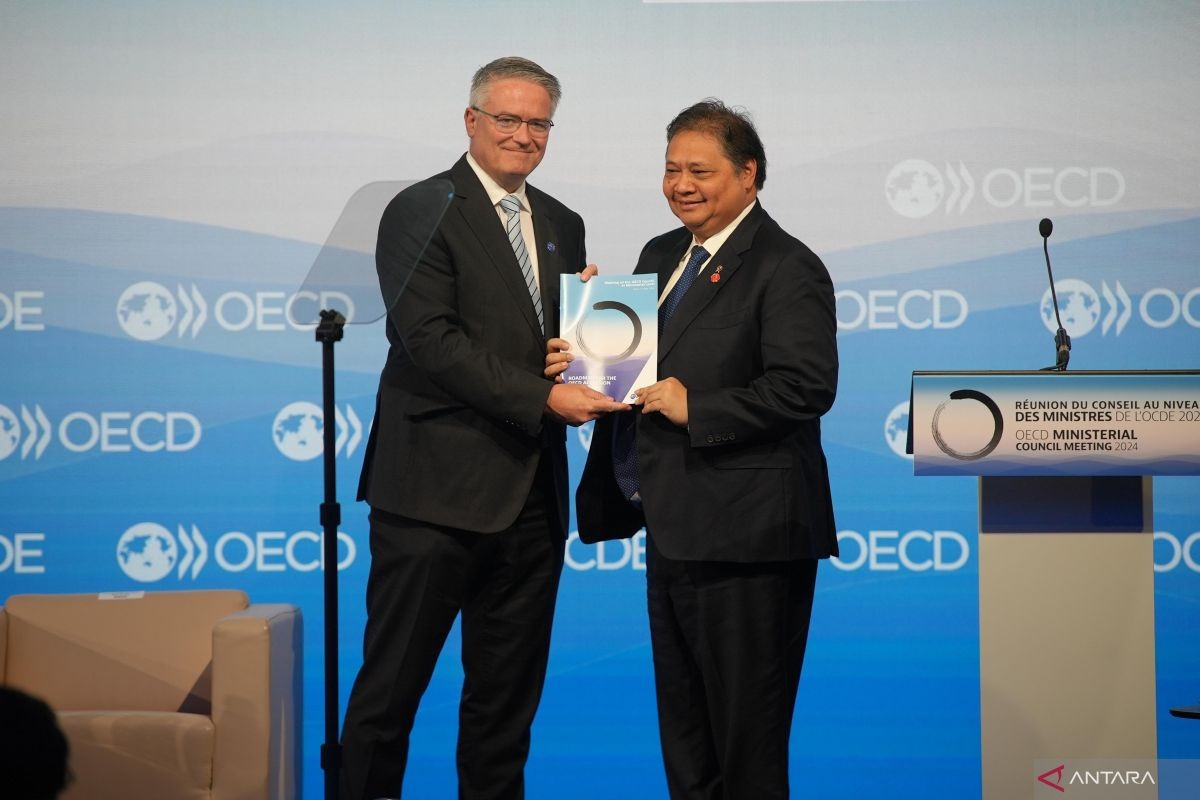 World
World
Indonesia Accelerates Procedures to Join OECD
 World
World
South Korea elects Lee Jae-myung president
 World
World
22nd Shangri-La Dialogue: Japan, Philippines boost defence cooperation
 World
World
Pakistan NCRC report explores emerging child rights issues
 World
World
"India has right to defend herself against terror," says German Foreign Minister, endorses Op Sindoor
 World
World

